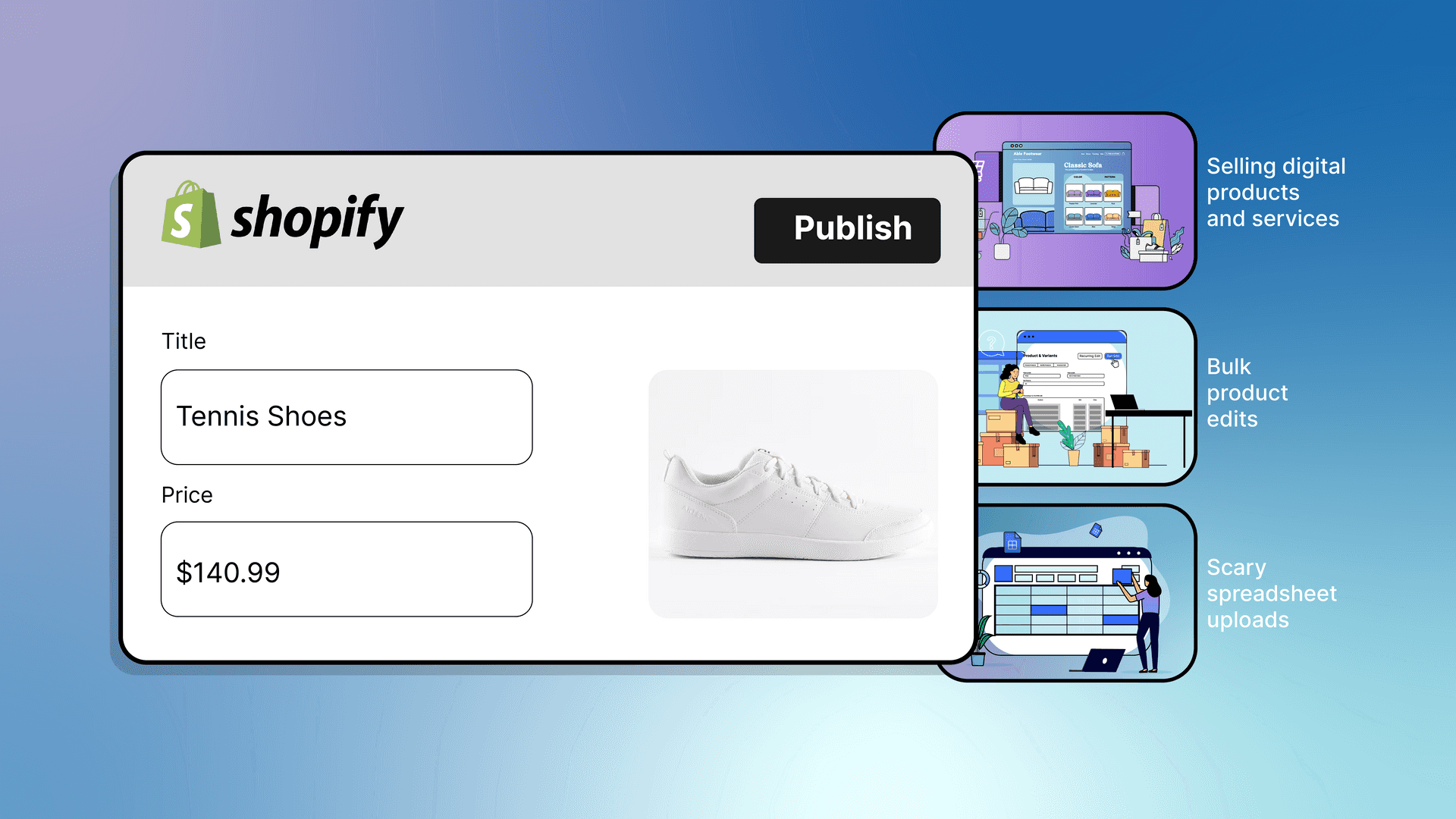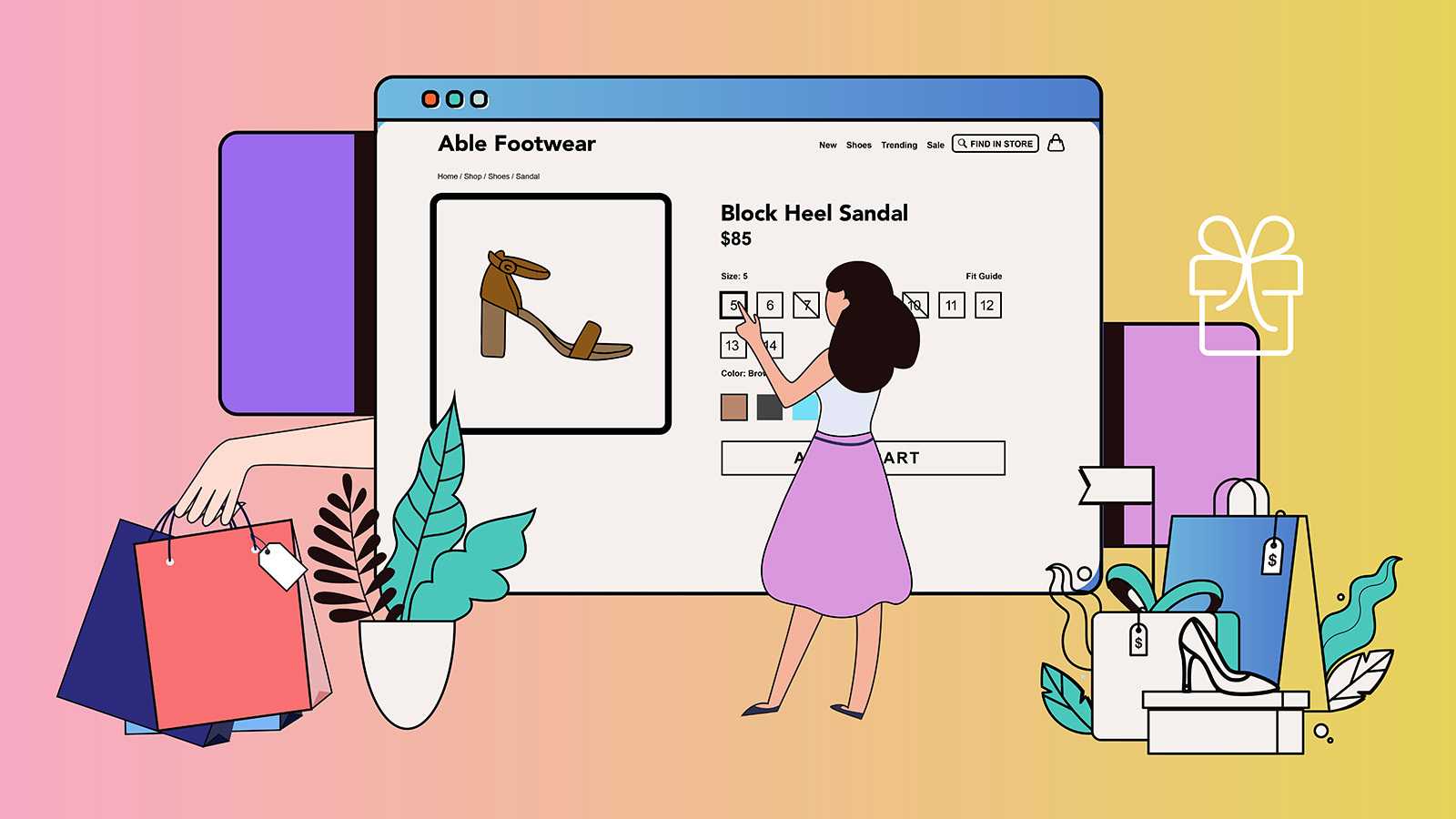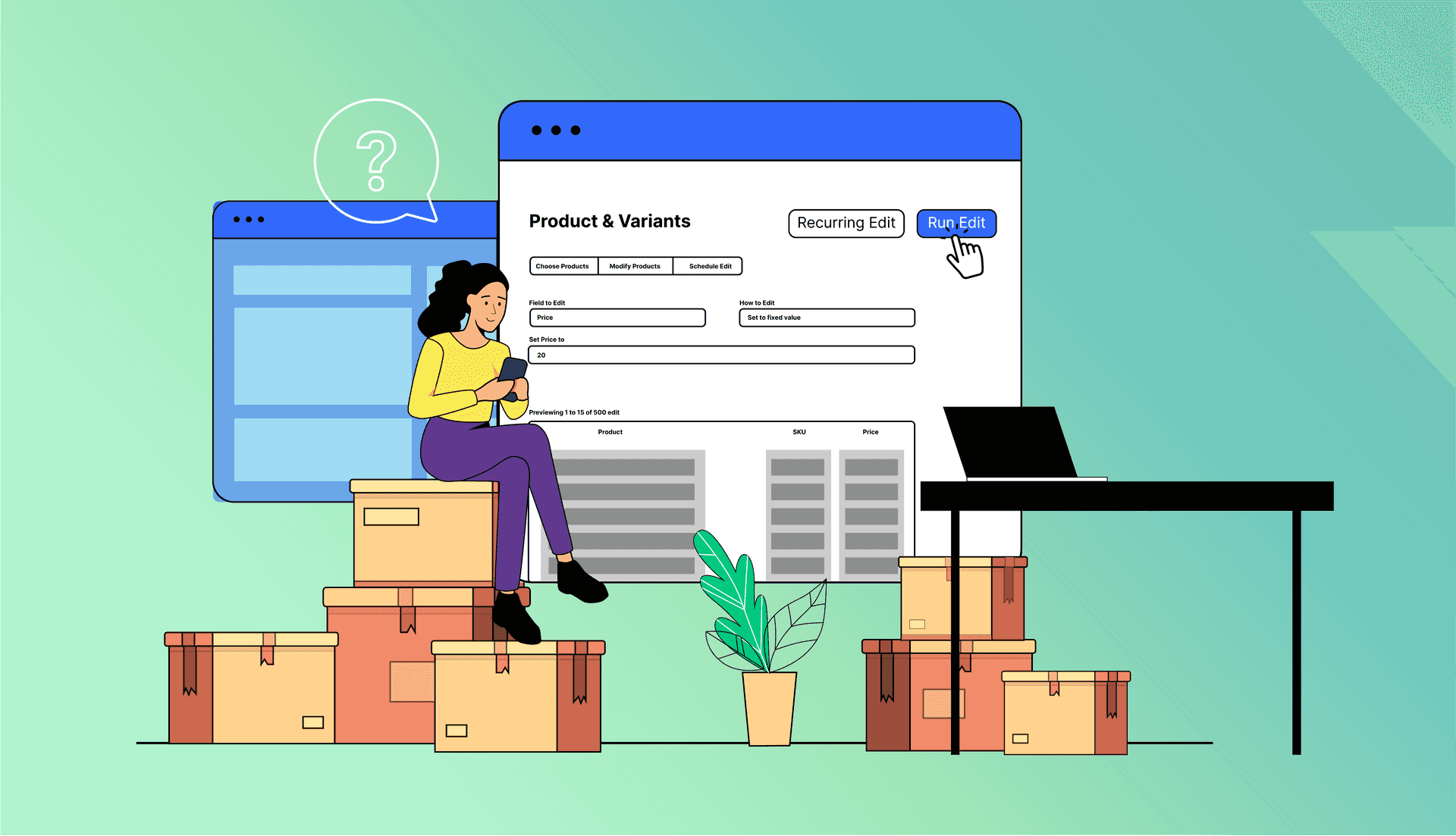Ready to finally launch your online store? Shopify is a top choice for ecommerce businesses starting out or scaling up: Shopify powers nearly 5.5 million websites. It has a powerful suite of tools to help you build and manage an online store without coding—but there are, of course, a few limitations.
As a site you’ll use every day, it’s important to know the pros and cons of Shopify. Here are its biggest advantages plus its top six limitations and workarounds to get past them.
Shopify Pros and Cons
Shopify offers a powerful, user-friendly platform with robust ecommerce features and reliable support. It was originally created for small and medium businesses and still has an approachable, “out-of-the-box” feel. Over time, Shopify has added global markets, POS, and pro features that appeal to large retailers. Here are the top advantages of the platform.
Shopify’s biggest pros
- User-friendly interface: Shopify offers an intuitive, easy-to-use platform that doesn’t require coding. Its drag-and-drop tools and user-friendly dashboard make it accessible for beginners.
- Scalability: Shopify can accommodate businesses of all sizes, from startups to large enterprises. It can handle increased traffic, orders, and product listings to match your business growth.
- Extensive app ecosystem: Shopify’s app store gives a wide range of third-party apps to enhance store functionality, with extra features like marketing tools, inventory management, and customer support solutions.
- Mobile responsiveness: Shopify themes are mobile-responsive, ensuring your store displays properly on all devices.
Shopify’s 6 biggest cons and limitations
Shopify is a powerful platform but has a few weaknesses. Fortunately, there are ways to overcome most of its limitations.
1. Extras needed for customization
Shopify is created to be a drag-and-drop, out-of-the-box solution. For most small business owners who aren’t website designers or developers, that’s a good thing. You can create a beautiful, functional online store without a single line of code.
Where some merchants run into challenges is in customizing their store. Certain features and designs require custom coding or third-party apps. For example, many merchants need to turn to apps for:
- Adding reviews to your site
- Email marketing
- Dropshipping
- Reward programs
- Digital downloads
Workaround: Carefully choose your theme upfront (a premium theme is often worth it in the long run!), thinking ahead to how it will serve your store as you scale. If you get stuck, use your 60 minutes of free design support from Shopify (Basic Shopify plans or higher), contact the theme developer, or work with a Shopify partner to customize your theme. You can also have a developer design your site from scratch through Shopify Hydrogen. With third-party apps, leverage free apps and consider which ones are worth paying for to save time and drive revenue in the long run.
2. Variant limits
Here’s another limitation you should know: Shopify limits stores to 100 variants per product. This might seem high, but it’s easier than you think to reach. Imagine you’re selling a shirt that has 10 color options, 5 sizes, and a long-sleeve and short-sleeve option. That’s 100 variants right there.
There’s good news! Shopify has heard merchants’ frustrations and is working on new product APIs to increase the variant limit to 2,000 per product. The larger limit is being rolled out to select stores in 2024 with a wider rollout planned for 2025.
Workaround: To overcome Shopify’s variant limit, you have two options. First, you can split your product listing into two or more, eg. creating one product listing for short-sleeved shirts and another for long-sleeved.
Second, you can use a third-party app like Infinite Options or Product Options & Customizer to surpass the variant limit. These work by letting you combine variants across products.
3. Product upload limits
While Shopify promotes itself as “unlimited” products, there are some restrictions. Once you reach 50,000 product variants in your store, Shopify will throttle your uploads to limit you to 1,000 product variant uploads per day. Trying to upload more than 1,000 variants after this threshold can result in a failed upload.
Workaround: If you’re a large retailer, you can upgrade to Shopify Plus to remove this limit. For most Shopify stores, Shopify Plus isn’t worth the cost. To avoid frustration, use an app that gives you upload visibility like Ablestar Bulk Product Editor.
4. Selling digital products and services
Since Shopify’s primary purpose is to sell physical items, its tools to sell digital products and services are limited. For example, if you sell food products but also offer virtual or in-person cooking classes, you need a way to set up service offerings on your site.
Workaround: First, follow these instructions to configure your product as a digital product or service in Shopify Admin so no shipping charges apply. You can use an app like BIG Digital Downloads or Filemonk to sell digital products like ebooks. If you also want customers to book an appointment time while paying for their service, use a third-party app like Appointly or Sesami.
5. Bulk product edits
Shopify Admin has a lot of benefits, but here’s one major downside. In Shopify’s native interface, you can either edit one product at a time or use Shopify’s bare-bones bulk editor in a table format. That means that product updates (including price changes for a sale) could take hours or even days.
Workaround: Your options are to 1) Edit your products with a spreadsheet (see frustration #6 below) or use a third-party app to manage bulk product edits. We designed Ablestar Bulk Product Editor as a user-friendly hub for uploads and edits with edit previews, logic, and visibility into your publishing status. (Need more details? Visit our Shopify bulk editing guide.)
Shopify user GN Kitchen and Bath shared how they use Bulk Product Editor: “I love this app! I’m ABLE to modify, update and fix many different fields within this app that Shopify just doesn’t even offer. I also use it for my stock feed on a daily basis. I highly recommend this app to anyone.”
6. Scary spreadsheet uploads
When you update your store, you want to feel confident. Shopify’s CSV option for bulk product updates doesn’t leave you feeling this way. First, you need to reformat your product information to fit their requirements: a single character out of place could cause you to delete or overwrite your product data.
When you upload a CSV document with changes, you can’t preview the changes or see the publishing status of your update. There’s no log of updates to refer to in case you run into issues.
Workaround: With Ablestar Bulk Product Editor, you can edit products in bulk in a user-friendly, visual interface with the ability to preview and undo all changes. If you want to continue using spreadsheets to update your products, you can use one of many formats, map your fields (and save the settings), and keep publishing visibility and the ability to undo your edits.
Yellow Deal, who uses Bulk Product Editor to manage their product catalog, left this review: “This app has been a lifesaver. It’s so much easier to edit hundreds of products and without the fear of having to re-uploading the entire listing every time!”
Shopify FAQs
How many products can you have on Shopify?
There is no limit on the number of products on a Shopify store. However, once you’ve reached 50,000 variants, your daily upload limit is 1,000 variants per day unless you have a Shopify Plus account.
What is the Shopify variant limit?
There is no total variant limit on Shopify, but stores are currently limited to 100 variants per product. Shopify is testing expanding variant limits to 2,000 per product, with a wider rollout planned for 2025.
How much does Shopify take per sale?
Shopify has multiple types of merchant fees that vary by plan type, payment type, location, and currency. If you use Shopify Payments to process orders, fees range from 2.4% to 2.9% of each order, plus a flat $0.30 transaction fee. If you use a third-party payment system, you will pay a transaction fee varying by your plan. For international sales, you may also need to pay a currency conversion fee.
What are restricted products on Shopify?
Shopify restricts certain types of products for sale on its stores. These include:
- Age-restricted products including alcohol, tobacco, and gambling
- Drugs, cannabis, and drug-related products
- Firearms, explosives, and harmful chemicals
- Animals (alive or dead), certain pet supplies, and items containing components from endangered species
- Artwork valued over $2,000 or that violates copyright laws
- Automobiles and auto and powersports parts
- Medical products and devices including prescription medicines, herbal supplements, and contraceptives
- Monetary items used as payment
- Sexually explicit materials
- Other items
Some of this varies by market and local regulations, so take time to read through their guidelines carefully. In some cases, you may be able to request an exemption or sell certain items in your store but not Shop or Managed Markets.
Build a powerful online store with Shopify apps
While Shopify has some cons and limitations, it’s overall a strong ecommerce and website builder tool. With Shopify’s native interface, partner ecosystem, and apps, you can build a powerful, customized store to sell online and build the business of your dreams.
Ready to supercharge your product management? Get started with Ablestar Bulk Product Editor.



